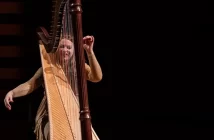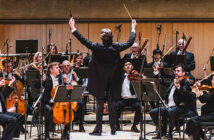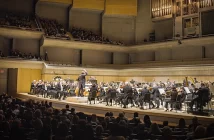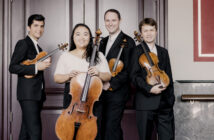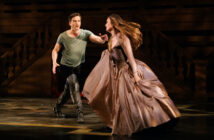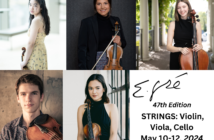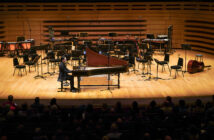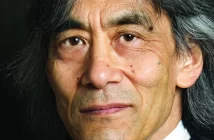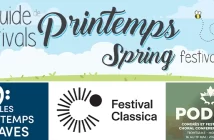ROUSE: Symphony No. 5 (world premiere). BEETHOVEN: Piano Concerto No. 2 in B flat major Op. 19. RESPIGHI: Pini di Roma (Pines of Rome). Emanuel Ax, piano. Dallas Symphony Orchestra/Jaap van Zweden. Meyerson Symphony Center. Dallas, Texas. February 11, 2017
For classical music lovers, each new composition by Christopher Rouse, one of America’s most often performed composers, is an “event”. Rouse’s Symphony No. 5, premiered last week by the Dallas Symphony (DSO), under its music director Jaap van Zweden, proved to be a major addition to the repertoire. This memorable concert also featured Emanuel Ax, better than ever at the keyboard, playing an early Beethoven concerto, as well as a performance of Respighi’s spectacular Pines of Rome that must rank with the best I have ever heard.
Rouse, who has enjoyed a long and successful career to date, won a Pulitzer Prize for his Trombone Concerto in 1993, and served as composer-in-residence with the New York Philharmonic from 2012 to 2015. With Jaap van Zweden on the podium for this DSO world premiere of his Symphony No. 5, Rouse must have been pleased indeed; it was van Zweden who conducted the premiere of his Heimdall’s Trumpet, a concerto in all but name, with the Chicago Symphony in 2012, and after nearly 10 years in Dallas, van Zweden has transformed the DSO into a seriously world-class orchestra.
Beethoven’s Fifth Symphony was very much on his mind, says Rouse, when he wrote his own Fifth Symphony, which explains his quotes from Beethoven’s work. Cleverly interweaving it with other ideas, for example, Rouse quotes exactly the timpani part leading into the finale of Beethoven’s Fifth. He has also borrowed Beethoven’s idea of reprising part of the scherzo movement in the finale. It should be stressed, however, that Beethovenian elements constitute a small part of what Rouse is about in his Fifth Symphony, and that rather than stealing from him, Rouse is paying homage to Beethoven.
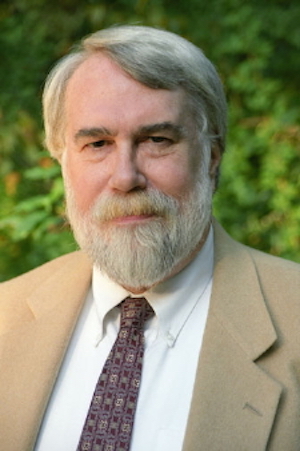
Composer Christoper Rouse
Rouse’s Symphony No. 5 comes out of the gate with all guns blazing, especially the four percussionists. Known for writing “noisy” music, Rouse is at it again in this piece; in fact, the opening bars are so loud it is difficult to make out exactly what is going on. It takes a minute to sort out which instrument is playing what, and which musical ideas one needs to follow. Perhaps familiarity – a second or third hearing – would bring clarity. Unfortunately, Rouse doesn’t make it easy for the first-time listener to fall in love with the piece. That said, there is no doubt that by giving us “shock and awe” right off the bat, he grabs our attention – not always a bad thing.
Rouse’s symphony clocks in at just under 30 minutes –as does Beethoven’s Fifth, which gives the composer plenty of time to present musical ideas and to develop them. And Rouse is a composer who’s full of ideas. As I have suggested, one of the challenges of any new work for the listener is determining which ideas are important and need to be followed and which are secondary. With a work as complicated as Rouse’s Fifth, this sorting out process can only come with repeated hearing. Perhaps the highest compliment I can pay the symphony is that it left me wanting to hear it again. There will certainly be more performances of the piece and a recording is promised with the National Symphony in the fall.
Let me hasten to assure readers that Rouse’s Symphony is not unrelentingly loud; there are episodes of relief. In fact, there is a fairly lengthy slow movement featuring a rather beautiful string melody. There is even one striking passage featuring three bass flutes. Rouse’s own note in the program says that there is one bass flute but somehow that turned into three in performance. How do I know? Because the bass flute looks like no other instrument in the orchestra, and is certainly quite different from your garden variety flute, which is one long stick of metal, while the bass flute has another tube doubling back on itself. The bass flute is a rarity in modern symphony orchestras; I can’t recall it being used in any piece with which I am familiar, although I am aware that composers John Cage, Claude Bolling, Morton Feldman and others have written parts for bass flute in solo and small ensemble pieces. How the Dallas Symphony managed to come up with not one but three bass flutes for Rouse’s new symphony is probably a story in itself!
Lest one think that he has gone sentimental on us in recent years, Rouse soon dispels that notion, breaking into the warmth and peacefulness of the slow movement with emphatic intrusions from the lower brass, which, every few bars, begin to interject dissonant and menacing chords. Perhaps this is another allusion to Beethoven’s scoring in the slow movement of the Piano Concerto No. 4, where he uses the orchestra to all but silence the brooding lyricism in the piano part. As Rouse’s symphony is not a programmatic piece – at least according to the composer himself –one cannot be sure what he had in mind. The effect of his scoring does suggest that wallowing in beautiful melody is not a quality he admires, as before long we are back to loud, corybantic music. The symphony ends with percussion and brass riffing spectacularly on all the basic thematic material in a masterful build-up to a crowd-pleasing climax.
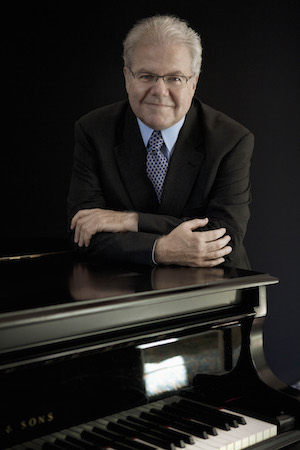
Pianist Emanuel Ax (photo: Lisa Marie Mazzucco)
Early in his career, it seemed that pianist Emanuel Ax’s quiet and self-effacing personality would make him an ideal chamber music partner for almost any musician of stature – he famously worked with the likes of Isaac Stern, Yo-Yo Ma and many others – and that chamber music would be the focus of his career. As the years went by, however, more and more people realized that Ax’s talents went far beyond chamber music. Perhaps he was too shy and lacking in charisma to be a soloist, but as younger hotshots fell by the wayside, and he reached middle age, musicians, conductors and managers began to realize that pianist Emanuel Ax had become a widely admired elder statesman, indeed a beloved figure.
And so it was in Dallas last week, that Emanuel Ax made music with Jaap van Zweden and the DSO, and gave us a performance that was a veritable master class on how to play Beethoven. As it should be, this was chamber music playing on an exalted level, with Ax and the orchestra perfectly balanced and their phrasing perfectly matched. The strings in the orchestra, although somewhat reduced, were still robust enough to balance with a modern Steinway in a large concert hall. This was a performance with both style and common sense.
Respighi’s Pines of Rome, which used to be one of the most popular pieces in the orchestral repertoire, has for some reason appeared less often on concert programs in recent years. Fashions change, but the piece remains a masterpiece. Scored for a massive orchestra, Respighi knew exactly how to use each instrument to best advantage and always manages to achieve clarity and transparency in his orchestration. Take the opening bars depicting children playing under the pines in the Villa Borghese gardens in Rome, for example; the sound, while brilliant and thrilling, has ideal clarity, quite unlike the beginning of Rouse’s Fifth Symphony which is cacophonous and muddy by contrast. How does Respighi do it? The brilliance is created mostly by the scales in the winds and keyboards and sustained trills in the upper strings, and the excitement by muted trumpets and horns. The only percussion is triangle. And the double basses are silent. Amazing!
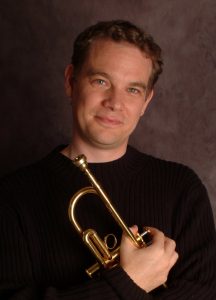
DSO principal trumpet, Ryan Anthony
The textures in the “Catacombs “movement are similarly perfectly conceived. The sublimely beautiful offstage trumpet solo was played superbly in this performance by principal trumpet Ryan Anthony. Great care was obviously taken to realize what the composer intended. In the score, the passage is marked forte ma dolce ed espressivo (loud but sweet and expressive), and that is how it was heard in the hall. In the “Pines of the Janiculum”, Gregory Raden played his clarinet solo with enormous sensitivity. One small quibble – the recorded nightingale sound at the end could have been a little louder; unfortunately, there is no volume marking at all in the score for this effect, but surely the composer intended it to be clearly heard.
In the last movement, Respighi vividly portrays Roman legions marching along the Appian Way. At the climax of this movement, an extra brass group – stationed in an upper side balcony in this performance – enters into a thrilling dialogue with the brass in the orchestra. What Respighi had in mind for the extra brass group were buccine, the instruments apparently used by the military bands in Roman times. Since these instruments don’t exist anymore, these parts are usually played – as they were in this performance – by a combination of trumpets (4) and trombones (2). Adding to the overall effect is the organ, in this case the magnificent Lay Family Concert Organ in the Meyerson. The Meyerson and its great organ, the superb DSO musicians, and Jaap van Zweden’s consummate talent for clarifying textures and building climaxes, all contributed immensely to making this one of the finest performances of Pini di Roma one is ever likely to hear.
It was announced recently that David Cooper, the principal horn of the Dallas Symphony, had been chosen to fill the same position in the Berlin Philharmonic. Fortunately, Mr. Cooper still has a few months more to go on his DSO contract and in the second half of the concert he made his distinguished presence felt. It seems that almost every note he plays is a wonder of technical execution and tonal beauty. What a musician! It should also be noted that the principal flute position in the DSO is currently vacant and guest principals are filling in each week. On this night, we heard Thomas Robertello from Indiana University and his playing was altogether worthy of the current high standard of playing in the DSO.
The premiere of a major new work by an important composer, a near-definitive performance of a Beethoven classic by a master pianist, and an inspired rendering of a virtuoso showpiece: all in all, a great night of music. Who could ask for more?
Dallas Symphony Announces 2017-2018 Season
Next season, which will be Jaap van Zweden’s last as music director of the DSO, will for the most part feature works he has conducted in Dallas before and for which he has a special affinity: Mahler’s Symphony No. 2, Bruckner’s Symphony No. 8, Beethoven’s Symphony No. 9 and Wagner’s Die Walküre in a complete concert performance. Some contemporary music, including the world premiere of Jonathan Leshnoff’s Violin Concerto written for the DSO’s concertmaster Alexander Kerr, has also been programmed. Finally, a number of guest conductors, among them Hannu Lintu, Donald Runnicles, Fabio Luisi, James Gaffigan and Pablo Heras-Casado, will be vying for the DSO music director position throughout the DSO’s 2017-2018 season. For more information visit the DSO’s website at www.mydso.com.



